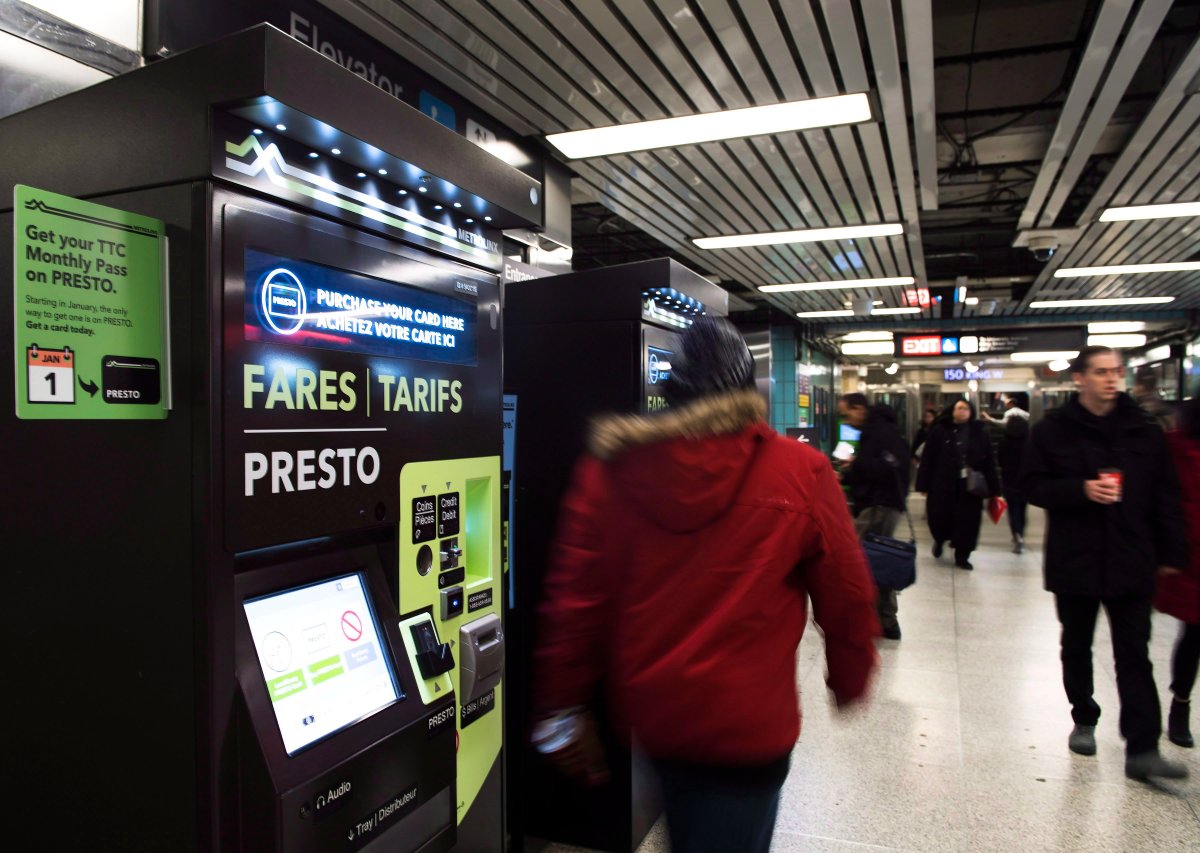A key Ford government affordability pledge has been held up by overambitious timelines the province was never able to meet, Global News can reveal.

The Ontario government had promised in March it would roll out full fare integration for transit agencies across the Greater Toronto Area by the end of 2023 but has been forced to extend the delivery to February 2024.
The policy will eliminate double fares for riders using any of transit service in the Toronto and Hamilton areas, like the TTC, GO Transit or Mississauga’s MiWay buses.
How fare integration will work
The plan is built on the Presto system and, instead of calculating fares based on distance or zones, it will eliminate so-called double fares.
It means riders will pay just one fare, regardless of how many different bus or subway services they use within two hours, once it has launched.
Take a trip from Richmond Hill to Etobicoke, for example.
Under the plan, the rider would still pay the standard fare for a GO Bus from Richmond Hill Centre to Renforth Transitway in Mississauga, but the local cost of transit in York Region and any MiWay or TTC buses that followed would be free to the rider, while the province would reimburse each transit agency.
If they travelled from Barrie to downtown Toronto, the GO Train fare would remain the same, while local buses in both cities would be free.
Someone transferring from the TTC to another local bus in the GTA like Brampton Transit would also only pay one fare. Integration deals already exist between various agencies outside of Toronto and across the 905.
The system promises to revolutionize transit for some in the GTA and, the government estimates, will save riders $1,600 per year.
Delays from overambitious timeline
When the province formally announced the program in March 2023, then-associate transportation minister Stan Cho said he was confident it could be delivered by the end of the year.
He promised the new system would be a “transformational opportunity to change the way we take transit” around Toronto.
The timelines he was working from, however, were impossible to deliver.
A source with knowledge of Metrolinx operations told Global News the provincial transit agency had been too optimistic with its initial projections.
When senior Metrolinx figures drew up the project plan for fare integration, they suggested the plan could be delivered through Presto cards comfortably before the end of the year, the source said.
When work began in earnest, however, it became clear the task of reworking Presto’s complicated software system would take months longer than senior officials initially thought.
The end-of-year target was quietly scrapped internally and a new plan was drawn up with a delivery date set closer to February 2024.
That estimate wasn’t public, with Metrolinx reportedly nervous about repeating their launch miscalculation, until it was inadvertently announced at a news conference in September.
Speaking to reporters, Todd McCarthy, who briefly served as associated transportation minister between two Greenbelt-related Ontario reshuffles, confirmed the timeline.
“Fare integration is part of our plan going forward in the very near future,” he said. “We’re just on target, five months away, in February 2024.”
A spokesperson for the Ministry of Transport would not confirm the exact launch to Global News, saying the project was on course for early 2024.
“We’re working closely with our agency partners to eliminate double fares for trips connecting to and from the TTC,” they said in a statement.
“Over the coming months, our government, Metrolinx, the TTC, and connecting agencies in the 905 will continue to perform design and assessment work so that our collective systems can be aligned for fare integration.”
The plan will cost up to $150 million per year
The policy, which was almost announced in the 2023 budget document, Global News understands, is one of the Ford government’s cheaper cost-of-living policies.
Other incentives to increase affordability for people in Ontario have cost billions of dollars. A 2022 decision to scrap licence plate stickers was pegged at around $1 billion per year, while cuts to the provincial gas tax until June 2024 will cost nearly $2 billion.
The fare integration policy will set the province back by significantly less.
Internal estimates suggest it will be between $100 million and $150 million per year over its first three years in operation, one source said. The total cost will depend on the number of riders taking advantage of the system and the number of fares the province has to refund to local transit agencies.
Another source pointed out the policy will allow the province to target money at local transit riders without pouring funds into expanded administration or increased wages at organizations like the TTC.






Comments